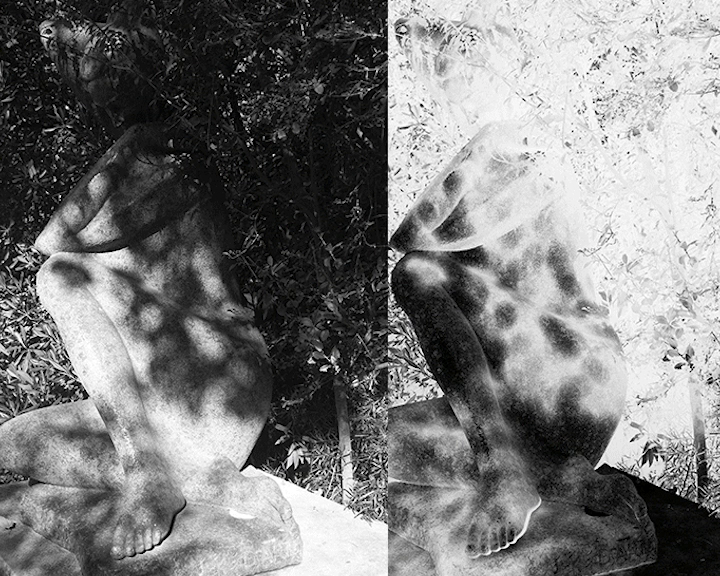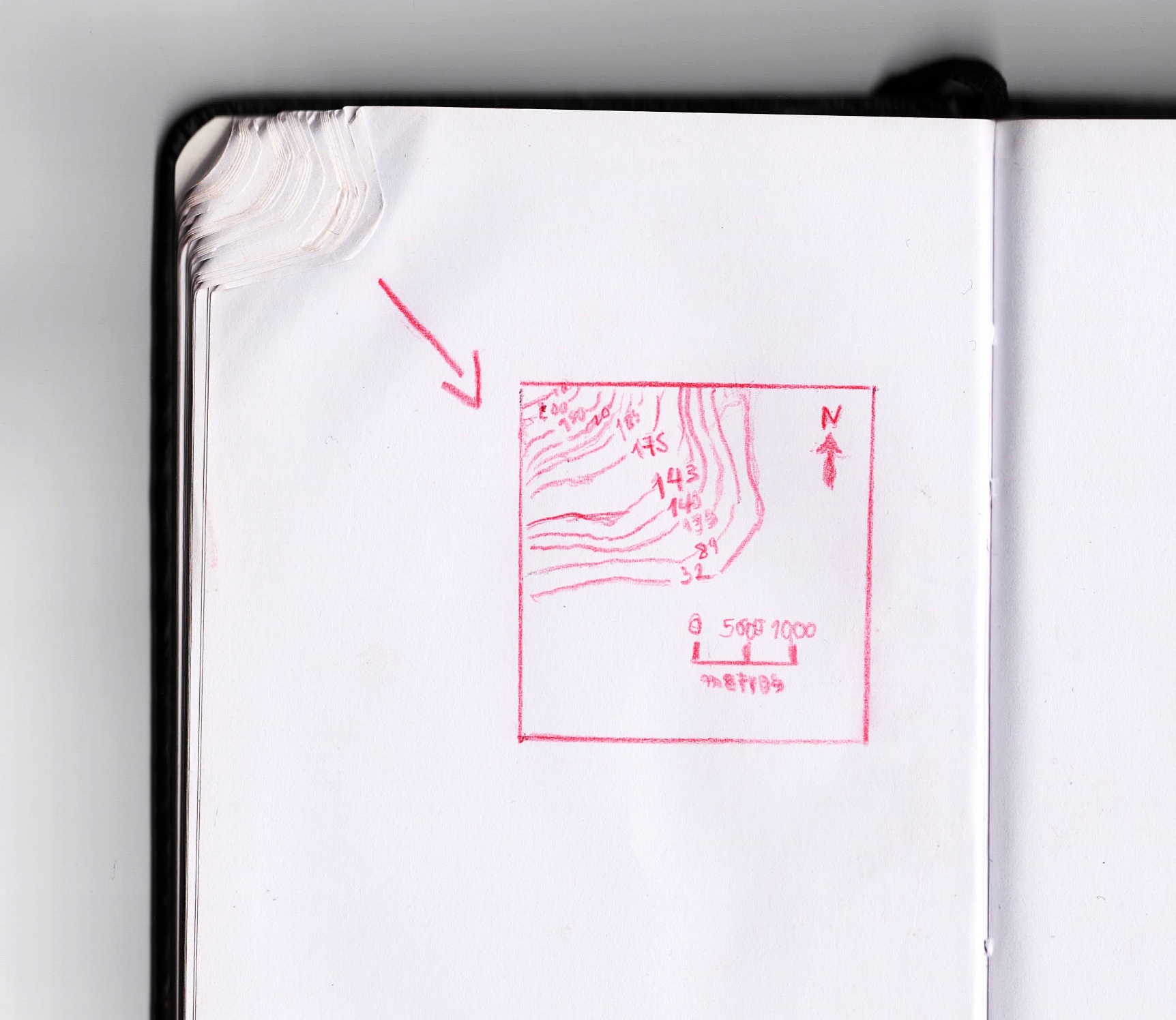THE INSTRUMENT
Imagine the following scene. You have a rendezvous with a friend. Before you leave the house, you check your phone for the quickest way to the café where you will meet. In the stairwell, you run past the signs indicating the evacuation route, heading for the subway. There, the various lines and stops line the walls as if it was an abstract artwork. You take one last look and move on. While catching up with coffee, you talk about moving, vacation trips. When you get home, you check your health app, the altitudes and how you walked that day. It was a good day because the number of steps was reached.
This situation seems very mundane but is stocked with maps. Although in different forms, and themes, they all have the same purpose. Navigation and orientation and documentation for the individual. Enabling efficient navigation and orientation. The system and symbols used are so familiar to us that we don't notice them anymore. Subtly, they have made their way into almost every aspect of our lives. The first three works address this. By referring to one of the symbols of the map they are able to make a simple and distilled act meaningful. The turning of a page becomes the creation of a relief in ‘From Occident to Accident’. In Elad Argaman’s work, a simple plastic pipe takes the lead role. As a part of a bigger installation and with extra sound added, the pipe guides the visitors. Outside the exhibition walls, it functions as a way to transport and make the movement of water possible, thus becoming an instrument of navigation. Besides this, the visual immediately resonates with the lines of the map or the trajectory one has to take to get from one point to the other. Lastly, Farah al Sidiky shows us the planning of a house. She researches the gap between what is on paper and the material built.
Then there is navigation. What if the map is not available? Is there an alternative? Carmen Bioque and Salma Shehattah propose a new way of navigation. With a poem of Lorca as a guide, Bioque walks around the city. She rediscovers statues, both navigation points as well as objects and artworks. They are fixed points and therefore isolated in an always-moving environment of the city. We could say that Shehattah does the same with its organic counterpart, trees. They are fixed in the same place. Give shade and transform the city with each season. Throughout the work, she tries to capture the shared memories of people and trees. Both works can be seen as a homage to the act of walking and strolling around, which goes against the efficiency that is radiated by the map. The artist Ane Bonde Rolsted goes even further. What if we don't know the map? By tracking a dog's steps and path with a GPS, she shows pure organic movement. In doing so, she also addresses the role between humans and nature and how we control the latter.
The project 'Contrasto' also works around the particular relationship between man and nature. Contrasto meansmeans ‘clash’ or quarrel but also the juxtaposition of different things.The participants made an humanistic interpretation map of the Uzzone Valley, following the ‘Anello Bello’ trekking route. Nature and human elements here have their own colour. By looking through coloured glasses, one or the other is visible.
Another work that goes against the straight line that the map seems to impose on us again and again is that of Elena Grossi. The straight line becomes a point. She goes in search of the empty spaces on the digital map.There, orientation is much harder and the views are more unusual. The series shows photographs that people have taken in such places. All of them are characterised by poorly functioning/used technology. It makes us question the relation we have to nature and the technology capturing it. Aurélie d’Incau experiments with a storytelling game on how to integrate data collection into play. By making a pizza map during a participatory storytelling project, the maps serves as an instrument to locate strange, and as well as ordinary affairs. By playing with roles, secrets, and strangeness, the project builds a map from participants' collective imagination.
This situation seems very mundane but is stocked with maps. Although in different forms, and themes, they all have the same purpose. Navigation and orientation and documentation for the individual. Enabling efficient navigation and orientation. The system and symbols used are so familiar to us that we don't notice them anymore. Subtly, they have made their way into almost every aspect of our lives. The first three works address this. By referring to one of the symbols of the map they are able to make a simple and distilled act meaningful. The turning of a page becomes the creation of a relief in ‘From Occident to Accident’. In Elad Argaman’s work, a simple plastic pipe takes the lead role. As a part of a bigger installation and with extra sound added, the pipe guides the visitors. Outside the exhibition walls, it functions as a way to transport and make the movement of water possible, thus becoming an instrument of navigation. Besides this, the visual immediately resonates with the lines of the map or the trajectory one has to take to get from one point to the other. Lastly, Farah al Sidiky shows us the planning of a house. She researches the gap between what is on paper and the material built.
Then there is navigation. What if the map is not available? Is there an alternative? Carmen Bioque and Salma Shehattah propose a new way of navigation. With a poem of Lorca as a guide, Bioque walks around the city. She rediscovers statues, both navigation points as well as objects and artworks. They are fixed points and therefore isolated in an always-moving environment of the city. We could say that Shehattah does the same with its organic counterpart, trees. They are fixed in the same place. Give shade and transform the city with each season. Throughout the work, she tries to capture the shared memories of people and trees. Both works can be seen as a homage to the act of walking and strolling around, which goes against the efficiency that is radiated by the map. The artist Ane Bonde Rolsted goes even further. What if we don't know the map? By tracking a dog's steps and path with a GPS, she shows pure organic movement. In doing so, she also addresses the role between humans and nature and how we control the latter.
The project 'Contrasto' also works around the particular relationship between man and nature. Contrasto meansmeans ‘clash’ or quarrel but also the juxtaposition of different things.The participants made an humanistic interpretation map of the Uzzone Valley, following the ‘Anello Bello’ trekking route. Nature and human elements here have their own colour. By looking through coloured glasses, one or the other is visible.
Another work that goes against the straight line that the map seems to impose on us again and again is that of Elena Grossi. The straight line becomes a point. She goes in search of the empty spaces on the digital map.There, orientation is much harder and the views are more unusual. The series shows photographs that people have taken in such places. All of them are characterised by poorly functioning/used technology. It makes us question the relation we have to nature and the technology capturing it. Aurélie d’Incau experiments with a storytelling game on how to integrate data collection into play. By making a pizza map during a participatory storytelling project, the maps serves as an instrument to locate strange, and as well as ordinary affairs. By playing with roles, secrets, and strangeness, the project builds a map from participants' collective imagination.
The Rumble
Artist: Elad Argaman ︎
Elad Argaman is an American artist based in London, England. His research and artistic practice are centred around the collision of various aspects, including memory, identity, language, symbolism, mythology, as well as deep time. His work spans across a variety of mediums, including sculpture, painting, moving image, and installation, and is deeply rooted in the exploration of these complex themes.




This striking 6-meter plastic pipe was featured as part of a larger installation in 2022, which explored the theme of urban sprawl as a living organism, where flesh and cement coalesce. The pipe not only serves as a visually arresting element of the installation but also functions as a sound piece, with the inclusion of loud drums played from within the pipe (provided and recorded by a musician). The beat of the drums serves as a navigational tool for the viewer, leading them through the space and creating a sense of movement and exploration. As a component of the larger installation, this piece offers a unique perspective on the relationship between the natural and built environments, creating a thought-provoking and immersive experience for viewers.
AUDIOPIECE
AUDIOPIECE
From occident to accident
Artist: Francisco MenezesFransisco Menezes, 1993, is a multidisciplinary artist based in Lisbon. He holds a degree in sculpture from the Faculty of Fine Arts of Lisbon and completed the Maumaus International Study Program. Selected exhibitions in the past include the Paula Rego Prize at CHPR (2017, 2018), Essays on Collaboration at Pousio, Lovers, and Our Slice of Time at Zaratan (2022) among others.
You are/were here
Artist: Farah Al Sidiky ︎
Farah Al Sidiky is a multi-disciplinary artist, curator and writer based in Qatar.
Her research explores the formation of narratives through imagery and text. She graduated in Fine Art and Contemporary Art Theory. Her current artistic practice uses found and made materials to demonstrate frames of temporality and how they are layered in different modes of reading.
Her research explores the formation of narratives through imagery and text. She graduated in Fine Art and Contemporary Art Theory. Her current artistic practice uses found and made materials to demonstrate frames of temporality and how they are layered in different modes of reading.




Exploring modes of map making before and after a build. What makes a set structed housing unit into the intangible lived home, and the transitions between.
Mixed Media.
Mixed Media.
Carmen Bioque (she/her) is a Lisbon based curator and researcher in the field of contemporary art with a special interest in philosophy, theory, and aesthetics, and a great passion for film, hybrid art practices linked to the moving image and electronic music. She is a multimedia artist working primarily with digital and analog photography, collage and video-installation with a key concern in the synergies between imagescape and soundscape as to portray the emotional innerscapes of the mind and to build poetic visual essays. Lastly she is a DJ by the aka of Ácida Bliss as a continuation of my enquire into soundscape.






Audiovisual poem in a multiple projection video-installation.
WORK HERE


